First things first, I want to say thanks to Kodak Alaris for sending me this roll of Portra 800 film to shoot. A little while ago I was contacted by their PR guy who asked me which of the professional line of films I had shot. I was almost embarrassed to say that apart from a very rare roll of Tri-X and a couple of rolls of Portra 160 I shot on holiday about 4 years ago, Portra 400 was the only one of their films that I shoot regularly, and certainly the only one I feel particularly familiar with.
In response to this I had a little care package sent to me containing (along with a few other films I’ll come back to at a later date) two rolls of Portra 800. Funnily enough, I’d actually been warned off Portra 800 in the past. I was told that thanks to it not being one of the new Portra emulsions, I’d be better off underexposing Portra 400. That’s advice that has stuck with me until these rolls landed on my desk at work.
Given the higher speed of the film it seemed only right use it in lower or more difficult light to see how it held up. I must say, I am really happy with the results! It’s certainly not as grainy as I thought it might be and even where large parts of the image were under-exposed, it scanned really easily! This latter point being a big deal for me – I really don’t like faffing around with my scanner, with my preference being just to get decent files that I can work with in lightroom.
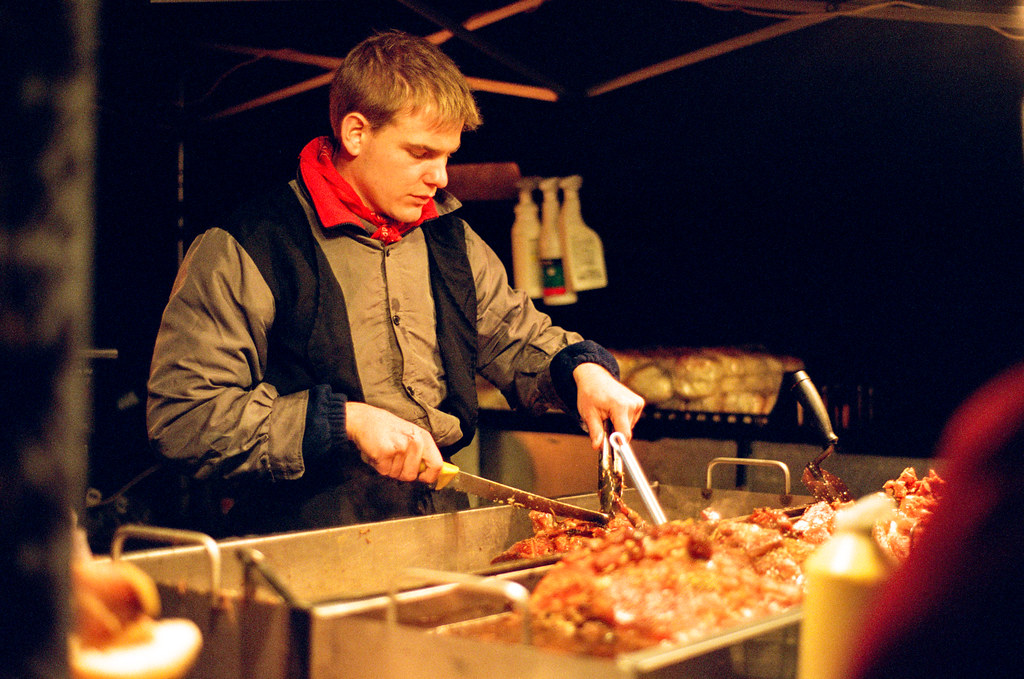
The next step (somewhat inspired by some advice I had on twitter) is to overexpose some in good daylight – I’ve seen some really nice results, and want to see if I can capture a bit of the colour pallet I’ve seen. But anyway, more on that another time…
The Nikon F75 at the Christmas Fayre
I talked around the way I think differently with different cameras in my hands in my post about the Lure of the Uncomplicated camera. How the Nikon F75 impacted on my thought processes at the Christmas Fayre makes for a really good opportunity for me to qualify some of those thoughts without me getting too bogged down in being too critical of the camera itself.
When I started this series of posts, I said that I hoped I wasn’t going to get too distracted by all the features the camera offered. As it turned out, not getting distracted was a little harder than I expected. Though, to be fair, I only really have my own brain to blame.
How this happened
Shooting one of my manual cameras in difficult lighting I’m in full control and have my mindset set to adjusting the exposure to the light being reflected off my chosen subject matter, not all the bright points of light. I know how to expose properly in this sort of light without a meter and – at least with the flexibility of my chosen negative films – I rarely fuck it up.
Even shooting a simple point & shoot I can give myself a sense of being in control. Point & shoot cameras often have pretty dumb centre weighted light meters, so it’s often quite easy to work out what they’re thinking with little more than a basic understanding of the metering pattern any particular P&S camera might have. I have in fact published a post about shooting point and shoot cameras in low light using the same Christmas Fayre for example images – have a read here
Getting in a muddle with a Nikon F75
Shooting the Nikon F75, my mindset started out as such that I could point and shoot in the difficult light of a Christmas Fayre and everything would be ok. Actually, as it turned out, this sort of worked out okay. I guess the camera’s evaluative “matrix” meter did a reasonably good job. I also suspect that the latitude of the film helped out a bit.
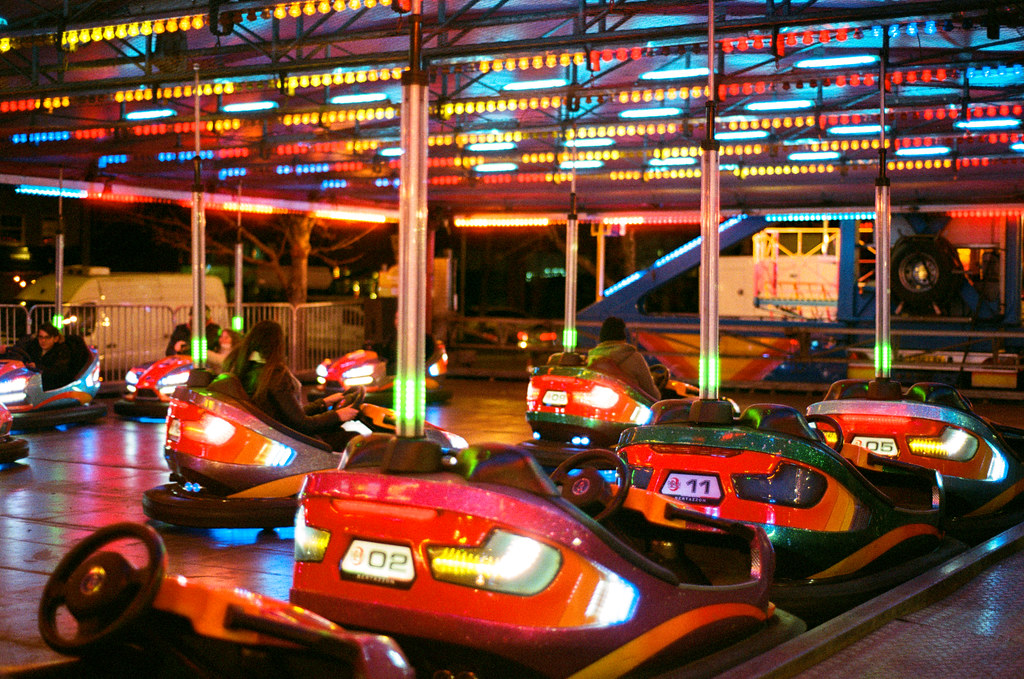
Regardless of the results, as I started shooting, I also started to feel out of control. The problem I had was with the level of information I was being given combined with my understanding of how the camera works all fighting against my instincts.
The camera reads out shutter speed and aperture in the viewfinder, so with it set to aperture priority in the very mixed and variable light the shutter speed was varying from its maximum to less than 1/30th. This was sometimes happening through changing the direction I was pointing the camera even as little a few degrees one way or another. This is of course due to the huge variation and nature of the lighting levels at the Christmas Fayre at night.
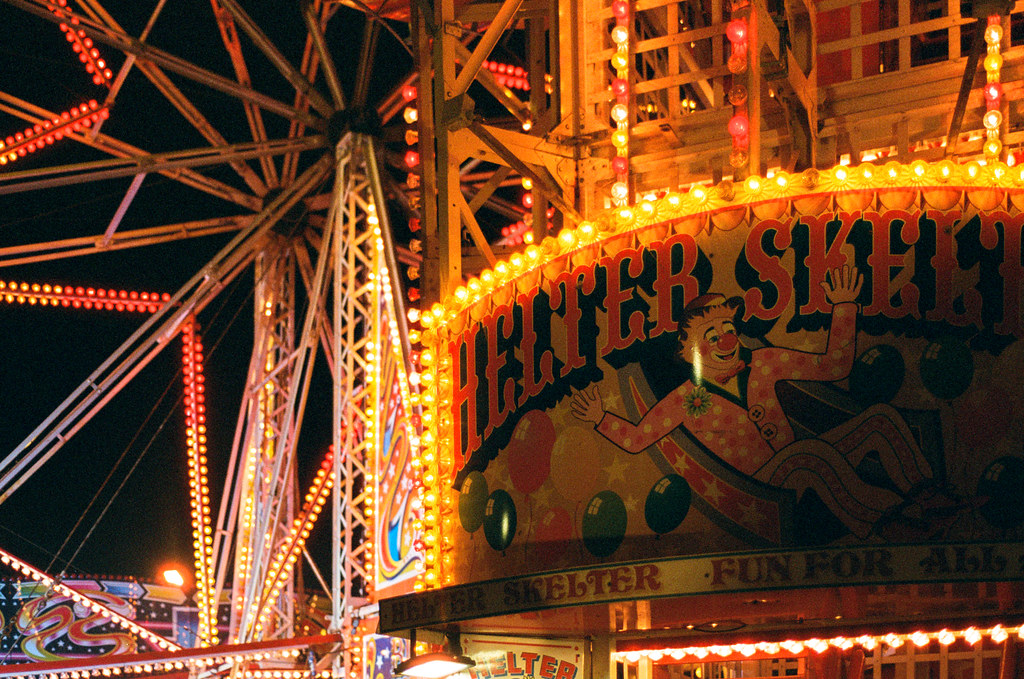
The problem I have is that given a camera with this level of specifications, I think I’m smarter than it, but also know it’s pretty clever too. The issue I have is that whilst I know it’s very clever, I found it hard to judge how clever it was being at any given time. I know that 9/10 times it’s going to make a good decision for me, but given my worry about the one time it’s going to fall over, I spend my time trying to judge it’s decision, rather than trying to judge the light for myself.
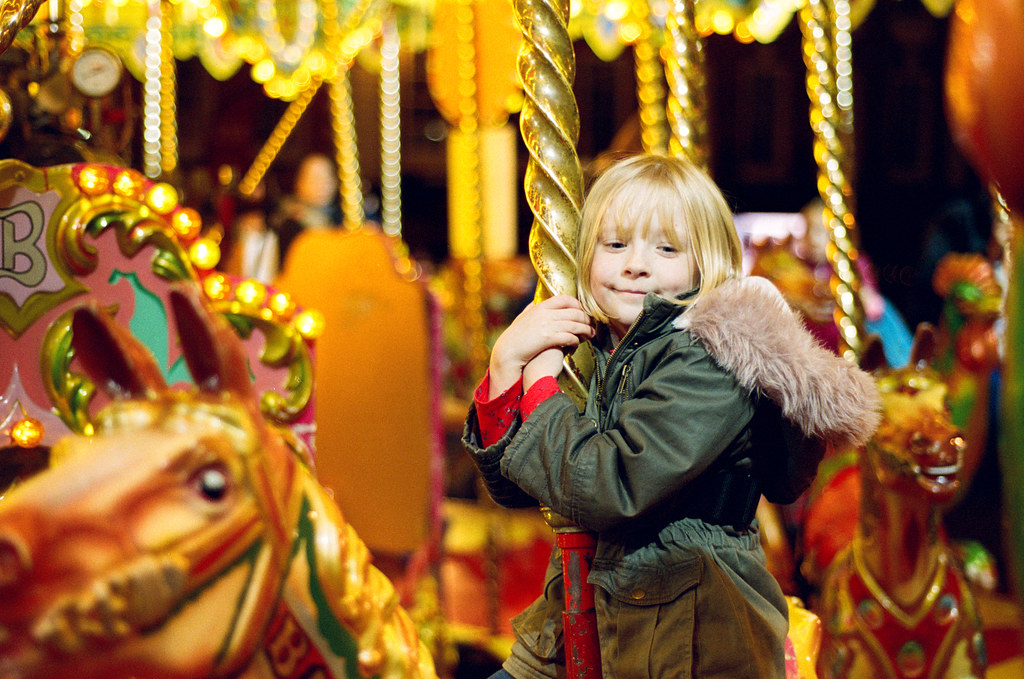
This became a massive distraction to me, and really impacted on my enjoyment whilst shooting it. What I should have done – and actually did after shooting a good few frames – was set the camera to manual and make use of my own brain and not the cameras brain.
Of course this frustrated me though both regretting not just taking a more simple camera, and being annoyed at the Nikon F75 for not allowing me to choose a more simple metering mode (centre weighted metering is only available in manual mode with the F75). I was in the paradoxical position I talked about in my Fuji X100f post where I simultaneously wanted both more and less features.
Autofocus fail
The above amounts to AE fail for me. I appreciate that in reality it didn’t let me down, but the shooting experience was hindered and so didn’t feel like a positive one.
Unfortunately I also had an autofocus failure too. The problem with the autofocus was not so much that it didn’t find focus, although it did fail in that department on and off too. What really annoyed me was that in its attempts to find focus it triggered the bloody annoying autofocus assist lamp which combined with it hunting and not finding focus in the poor light quite readily drew attention to me as I tried to take candid shots around the Xmas Fayre. Of course, it was only after I got home did I realise I could turn the AF assist light off via the custom menu…
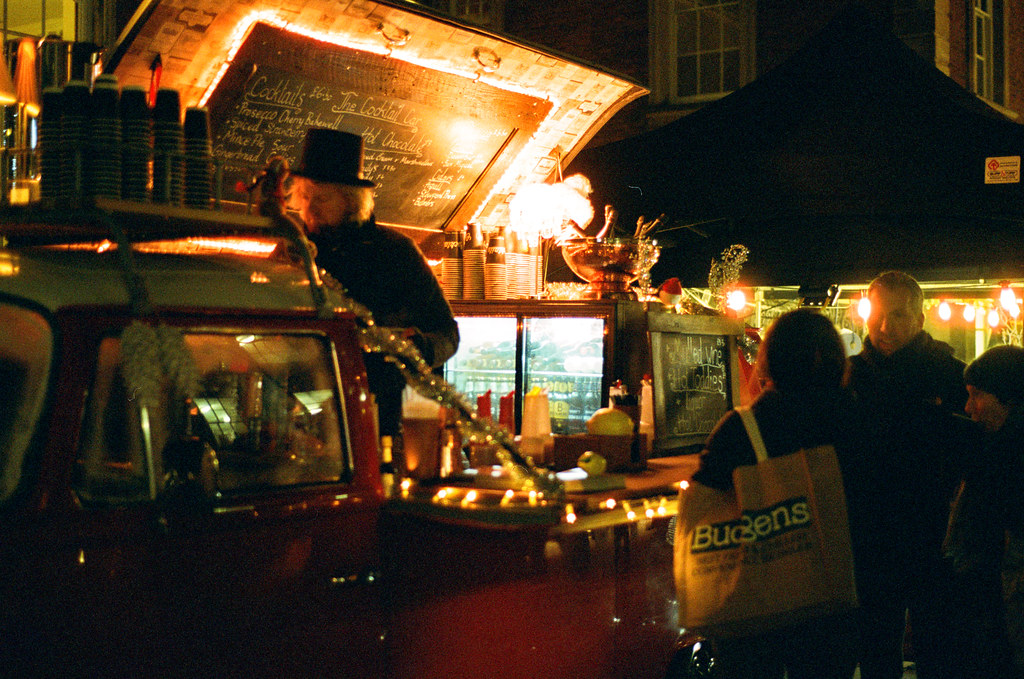
It was actually around the same time I realised I needed to switch the camera to manual exposure that I also realised manual focus would have suited me much better. I was shooting a camera that at its core is designed around automation. It doesn’t even have a manual focusing aid beyond a little focus confirmation light. Even the lens feels horrible to use as a manual focus lens…
It goes to show that just because a camera does have a lot of features, doesn’t mean it’s optimised to be used in all the different ways it can be. I actually find this quite frustrating, just as I felt with the Konica Hexar, it makes me feel like some of the features are really just superfluous fluff. But anyway, as I said, I don’t want to get bogged down by being critical of the camera itself, this really is about my personal approach, and how the Nikon F75 just didn’t work for me given this type of shooting… and that’s, as I say, despite getting results that I’m quite happy with.
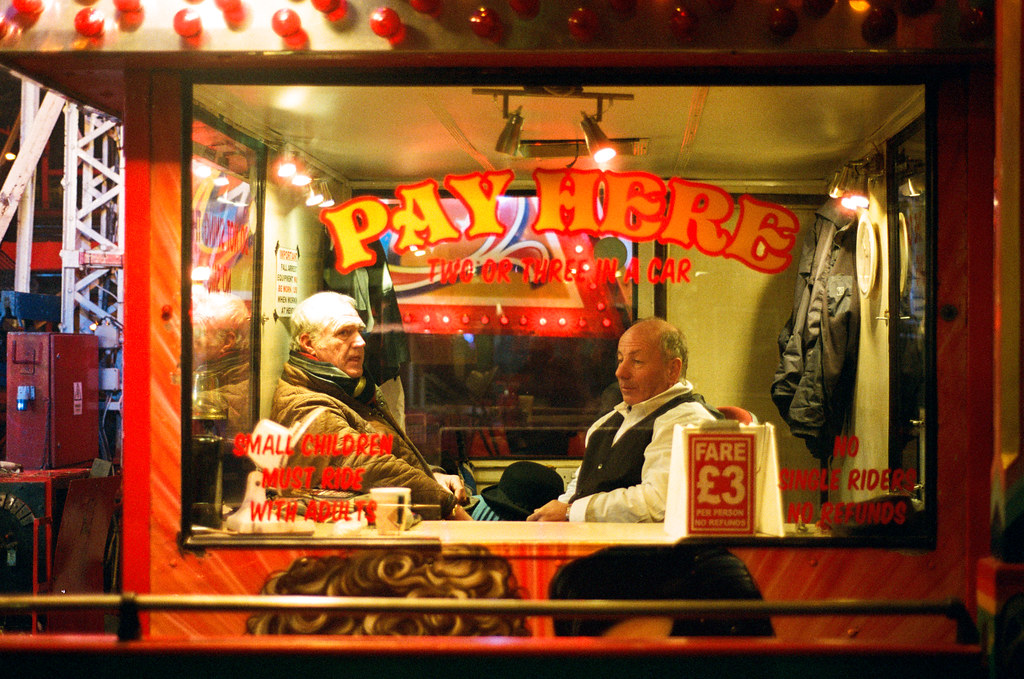
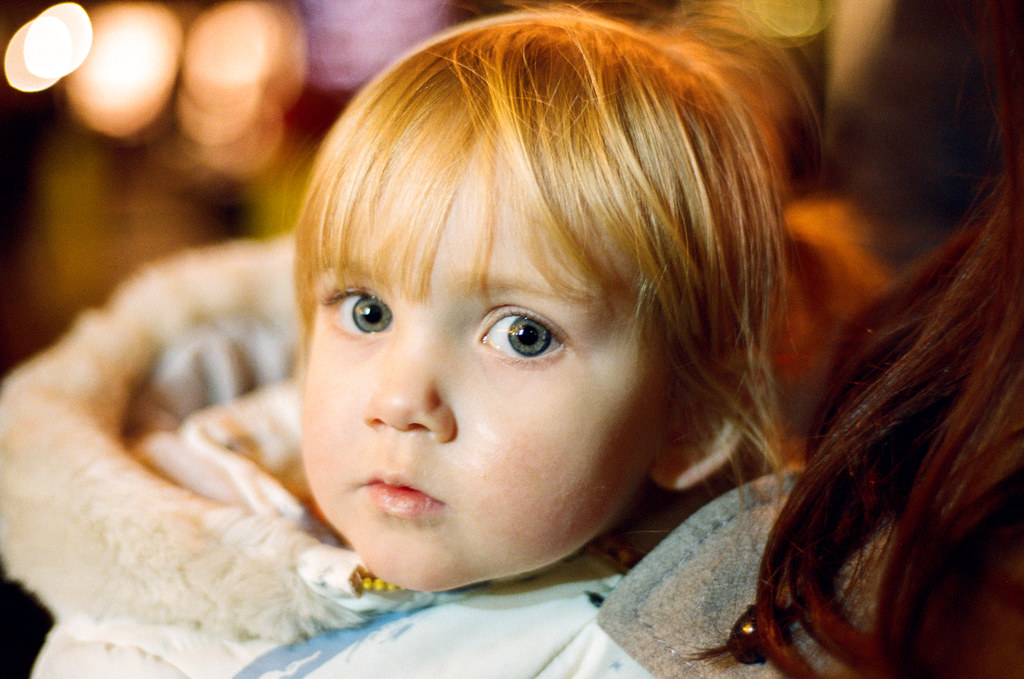
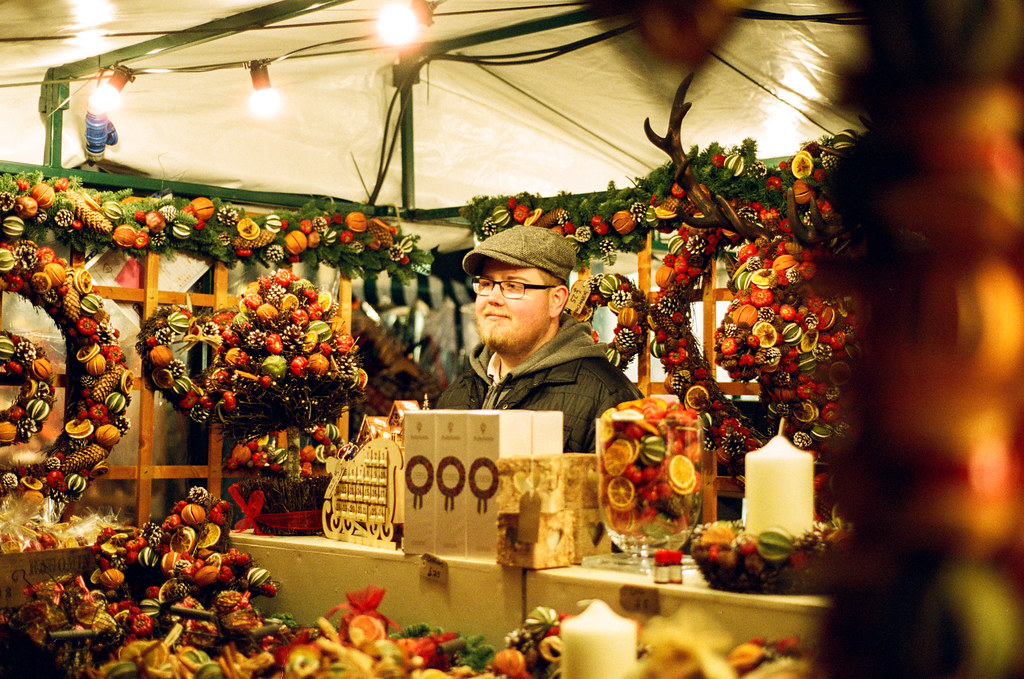
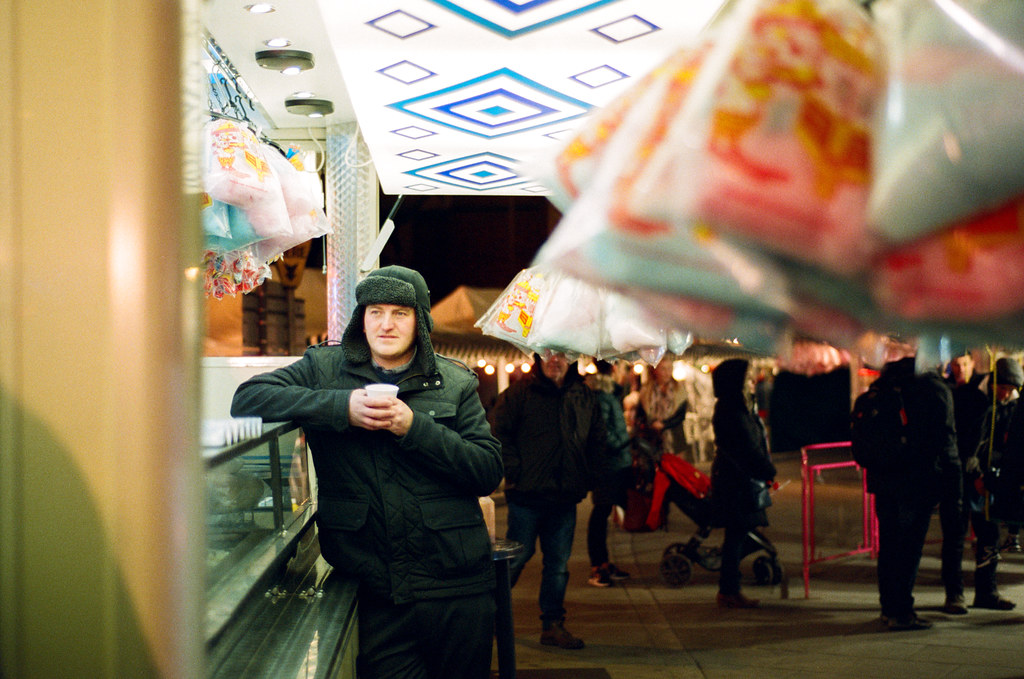
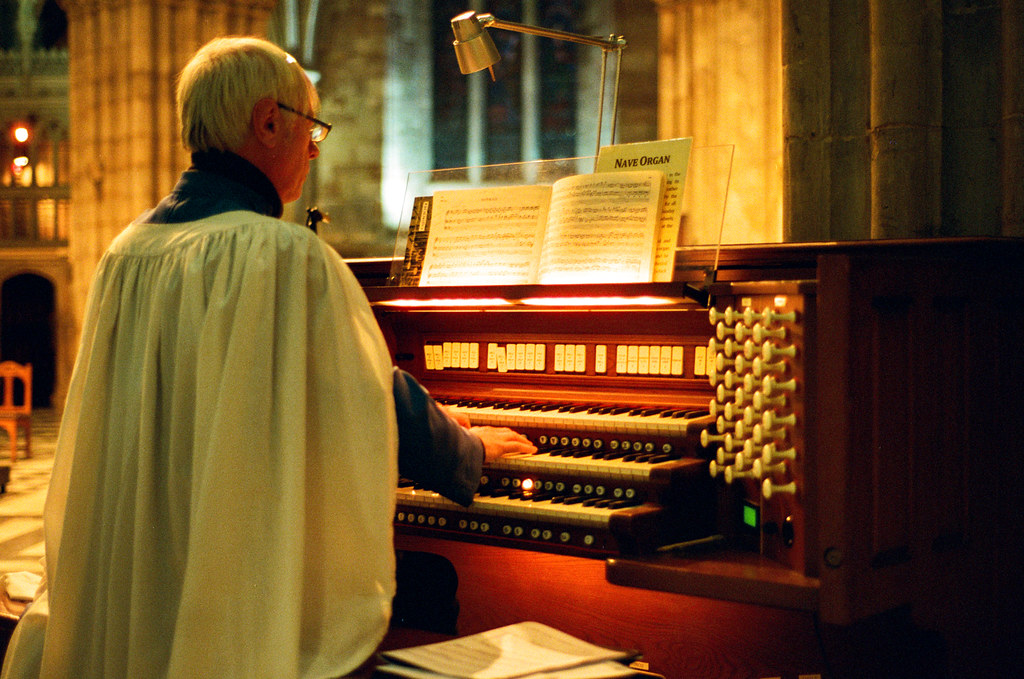
After the point & shoot joy I found in part 2, this was definitely not the experience I hoped to find here! I am aware that if I’d been able to set the metering pattern to a more simple one, and perhaps realised that I could switch off the focus assist lamp I wouldn’t have had as many issues, but ultimately I just couldn’t shake the feeling that I’d have been a lot happier and more comfortable with one of my manual cameras (read Leica M3).
Despite setting out to, I didn’t finish the roll at the Xmas Fayre either. As such, I will be back soon with some other thoughts on the experiences I had with the rest of this roll, specifically talking about trying to get used to using an SLR viewfinder again.
All posts from the project can be found here
Share this post:
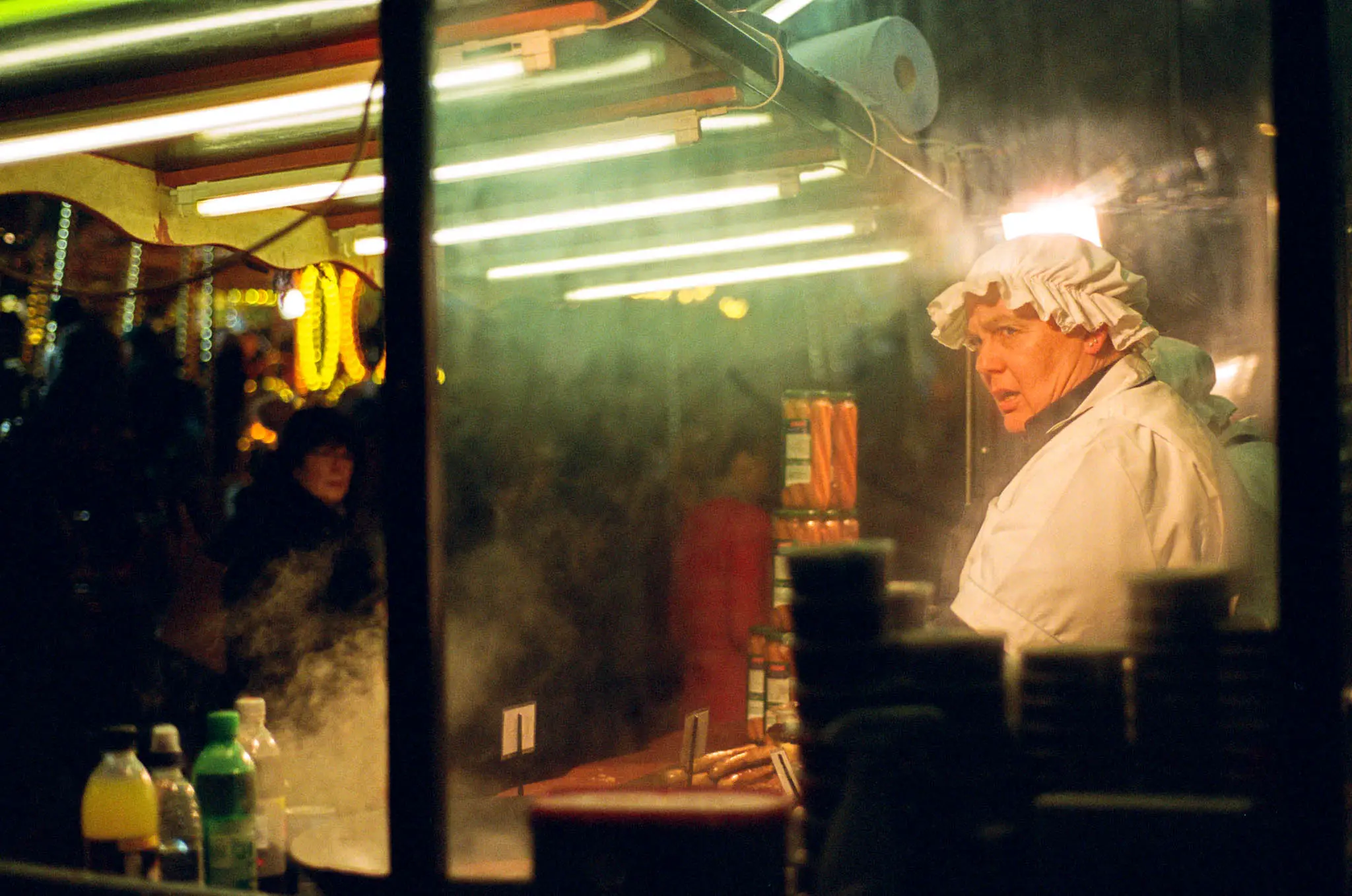








Comments
Dan James on Nikon F75 Project – Part 3 – Kodak Portra 800 & Two competing brains at the Christmas Fayre
Comment posted: 24/12/2017
Comment posted: 24/12/2017
Comment posted: 24/12/2017
Comment posted: 24/12/2017
Ken Davis on Nikon F75 Project – Part 3 – Kodak Portra 800 & Two competing brains at the Christmas Fayre
Comment posted: 24/12/2017
I'm really enjoying this post. I'm a collector of cameras mainly of the 1960's that I use. It's therefore interesting to see what you're doing with a later 'auto everything' film camera. Your eye is seeing the images and you've now worked out how to use the camera to capture them. Very good indeed.
Leo Tam on Nikon F75 Project – Part 3 – Kodak Portra 800 & Two competing brains at the Christmas Fayre
Comment posted: 24/12/2017
Comment posted: 24/12/2017
Alex Hakimi on Nikon F75 Project – Part 3 – Kodak Portra 800 & Two competing brains at the Christmas Fayre
Comment posted: 24/12/2017
Comment posted: 24/12/2017
Dean Bates on Nikon F75 Project – Part 3 – Kodak Portra 800 & Two competing brains at the Christmas Fayre
Comment posted: 24/12/2017
Great blog though, really enjoy your articles.
Comment posted: 24/12/2017
Terry B on Nikon F75 Project – Part 3 – Kodak Portra 800 & Two competing brains at the Christmas Fayre
Comment posted: 24/12/2017
Reading this follow-up post, I referred to the instruction manual as I only shot off a short length of b/w to test mine out. I haven't used it in anger, so to say, and so not under the extreme conditions that you have. I was somewhat surprised at how difficult it is to disable features or make adjustments. It is certainly a camera that demands a lot of "hands-on" and which is surprising considering its target audience. Without the manual, it isn't that intuitive, so I can understand your getting a bit frustrated. I notice that it can be set to centre-weighted AE, and I'm sure this would have been better than matrix in the majority of shots you took. Actually, I prefer centre-weighted over matrix any day.
I've been reading up on the F100 and this looks like it would be a better match for your slr requirements.
Comment posted: 24/12/2017
Ehpem on Nikon F75 Project – Part 3 – Kodak Portra 800 & Two competing brains at the Christmas Fayre
Comment posted: 24/12/2017
I have been using a Pentax ME Super a fair bit lately for its small size and general simplicity with ability to switch to manual if wanted. It has many fewer features than the Nikon, is probably smaller, and there is very good glass is available for a reasonable price. However there is no auto-focus on the model I have. Which is a mixed blessing as my experience with auto-focus on older cameras is that there can be a great deal of hunting for focus, and not much finding, in low light. Which I wish was not the case as my 3-part progressive eyeglasses are a pain to focus through manually. It is why I deep on defaulting to a couple of cameras that work well in all circumstances, like the Olympus mjuii and a Canon Elan 7N which is probably equivalent in many ways to Nikon F75.
James T on Nikon F75 Project – Part 3 – Kodak Portra 800 & Two competing brains at the Christmas Fayre
Comment posted: 24/12/2017
Comment posted: 24/12/2017
jeremy north on Nikon F75 Project – Part 3 – Kodak Portra 800 & Two competing brains at the Christmas Fayre
Comment posted: 24/12/2017
Focus is another issue altogether. Now that I need specs, I think I like idea of AF if available. However the irony is that the circumstances in which I'd rely most on AF are those in which it is least effective!
Mendez on Nikon F75 Project – Part 3 – Kodak Portra 800 & Two competing brains at the Christmas Fayre
Comment posted: 03/01/2018
I’ve been reading your blog for quite a while now (more than a year), but this is the first time I leave a comment.
Your posts have always helped me through my photographic journey, mostly when it comes to chosing cameras. I read your reviews, etc all the time.
I’ve been following this Nikon F75 project closely and I know it is not intended asa review of the camera itself.
By the time you started posting about it, I was thinking about getting a Nikon F75 50mm lens, but I haven’t made my mind yet.
I’m an Olympus guy, I currently have an Mju Ii, an OM-2n, a 35 RC and a Trip 35. I was thinking about selling the mju ii because it is way too much automatic for me, even though the lens is incredible.
I wanted to try a small AF Srl because I want to have a sort of p&s experience but with more control. I want to be able to focus quite fast and to use aperture priority mode.
I mostly shoot in daylight or interiors with enough light (Agfa 200/400 or Portra 400). I have small hands and I don’t like bulky cameras that cannot be easily carry around (that’s why my SRL is an OM-2n, one of the smallest srl out there).
I wanted to know if you’d be so kind to answer some questions, please:
First, I’d like to know if you recommend me this camera or not, taking into account the info just provided. Knowing that I’m used to cameras such as the OM2n and the 35rc which are the ines that I use the most.
Is this camera too loud? When focusing, or the mirror or even film advancing.
I’m now worried that AF in this camera could fail as you stated it in this post.
I really appreciate your help and you taking the time to read my comment.
This site is incredible and I’m very glad it is so helpful and inspirational.
P.S : English is not my main language, so I’m sorry in advanced if it is not very good.
Keep the amazing work!
Comment posted: 03/01/2018
Comment posted: 03/01/2018
'Unremarkable Architecture' - Kicking of a photo project (with Kodak 400 TMAX) - 35mmc on Nikon F75 Project – Part 3 – Kodak Portra 800 & Two competing brains at the Christmas Fayre
Comment posted: 28/01/2018
My Nikon F75 Project - Pt6 - preferences & ideologies - 35mmc on Nikon F75 Project – Part 3 – Kodak Portra 800 & Two competing brains at the Christmas Fayre
Comment posted: 04/03/2018
SSilv on Nikon F75 Project – Part 3 – Kodak Portra 800 & Two competing brains at the Christmas Fayre
Comment posted: 26/01/2023